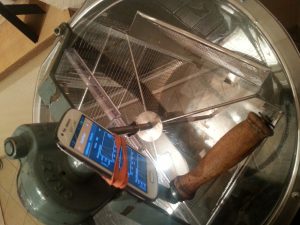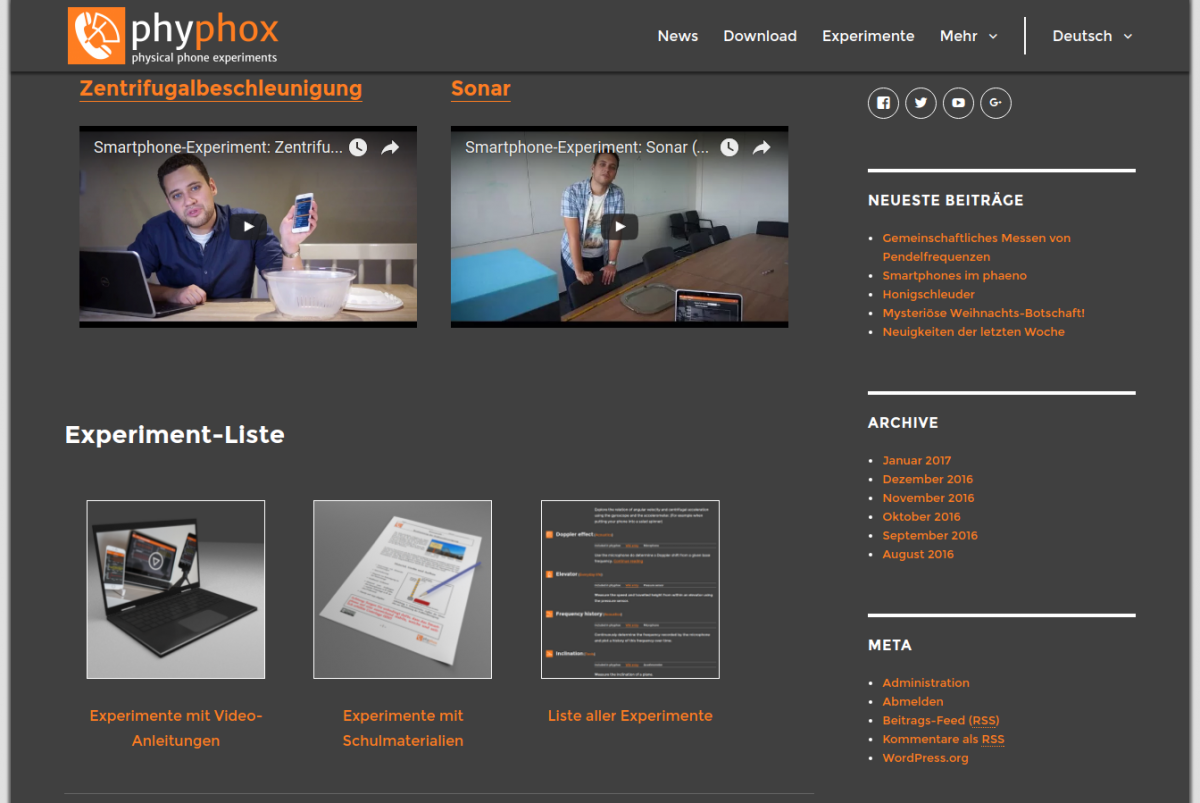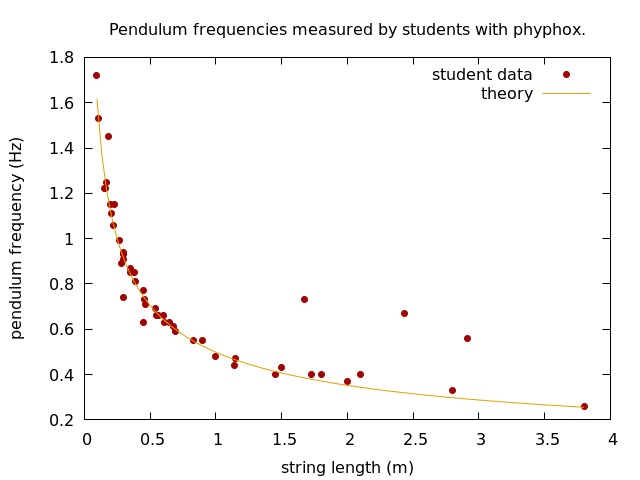We just updated our events calendar to include some noew events in Dresden, Erfurt and Bad Honnef. All three events will be in March and we will be happy to see you there.
Month: January 2017
Experiment database and worksheets
The listing of our experiments has changed. When you click the experiments link above, you will find a database of experiments, which you can filter by information and media available for each experiment.
As additional news, we now also feature worksheets for school. Unfortunately, so far these are only in German. If you have developed a worksheet yourself (in any language), we are happy to include it into our database. The only requirement is, that you apply a Creative Commons licence which allows to distribute the worksheet this way and note this on the worksheet. Just send any material to us via email.
Collective measurement of pendulum frequencies
As part of an optional assignment, we asked our students to create a pendulum, measure its frequency with phyphox and submit the results via a web form. I just picked up the data and got thrilled as the result is amazing:
I just had to clean out some obvious cases in which students did not use the correct units (no, they did not build a 69m pendulum).
They did not even know anything about the math of oscillations. Instead, I will introduce this topic in tomorrow’s lecture and will then use their own data to verify the result for the frequency of a pendulum:
$latex f = \frac{\omega}{2\pi} = \frac{1}{2\pi}\sqrt{\frac{g}{l}}&bg=404040&fg=ffffff&s=3$
Smartphones at the phaeno
Today I had a great day at the phaeno science center. On 11th and 12th of March, they will be doing an exhibition on physics experiments with smartphones, so today we had a lot of fun trying out a bunch of ideas for this event. So, here is a little teaser video…
Honey separator
 One of our users, Christian, wondered about the centripetal (or centrifugal, depending on your reference system) force in his honey separator. He basically has got a centrifuge for his honeycombs which extracts the honey using this force, but unlike our experiment using a salad spinner, he was unable to measure the acceleration directly because it exceeds the range of the sensors in his smartphone. So, instead he attached his phone to the crank of the centrifuge and created his own phyphox experiment, which uses the gyroscope to determine the rotation speed of the crank. From this, his experiment then derives the speed of the centrifuge itself and all the forces involved, taking into account the transmission of the crank as well as the radius at which the honeycombs are placed within the centrifuge. If you are interested in this, here is a link to directly open his exeriment in phyphox and a link to download his phyphox file defining the experiment.
One of our users, Christian, wondered about the centripetal (or centrifugal, depending on your reference system) force in his honey separator. He basically has got a centrifuge for his honeycombs which extracts the honey using this force, but unlike our experiment using a salad spinner, he was unable to measure the acceleration directly because it exceeds the range of the sensors in his smartphone. So, instead he attached his phone to the crank of the centrifuge and created his own phyphox experiment, which uses the gyroscope to determine the rotation speed of the crank. From this, his experiment then derives the speed of the centrifuge itself and all the forces involved, taking into account the transmission of the crank as well as the radius at which the honeycombs are placed within the centrifuge. If you are interested in this, here is a link to directly open his exeriment in phyphox and a link to download his phyphox file defining the experiment.
Thanks to Christian for sharing this unusual application with us.


